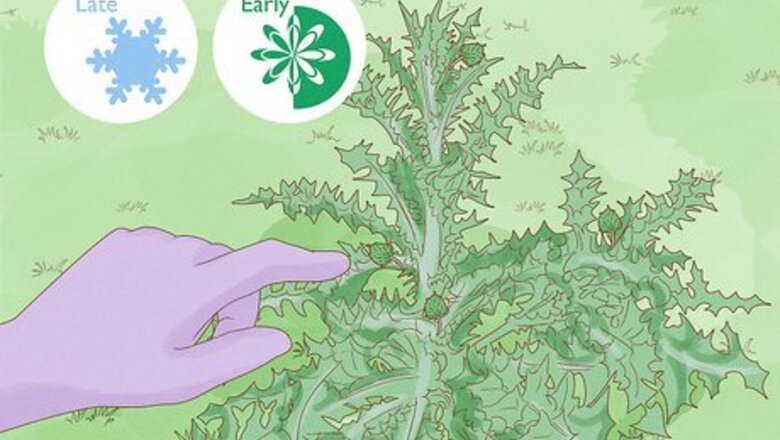
views
Scout your pasture in late winter and early spring.
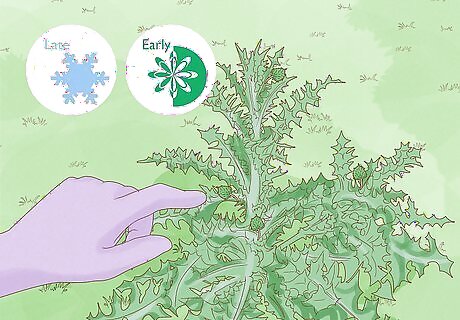
Search for thistles before they start to flower. The best way to get rid of thistles is to attack them before they have a chance to grow and spread. The best times to look for them are during the late winter and early spring, while they’re still sprouting and growing in their “bolting” stage. Take a walk through your pastures around this time to hunt for young thistles so you can take them out.
Look for thistle seedlings.
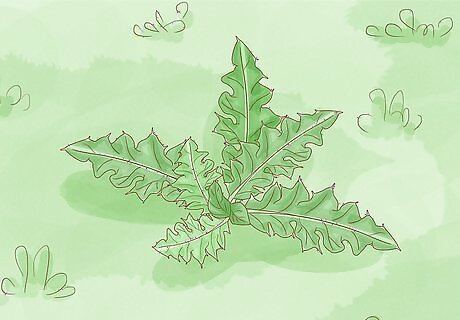
They’ll appear in a small, rosette growth form. While they’re still young, you won’t find the iconic spiny stems and purple or yellow-colored pom-pom flowers. Instead, thistles will appear as small growths that feature wavy leaves that look like small rosettes. When you’re searching through your pastures, keep an eye out for these growths. Some species of thistles will have spikes or hairs on the rosettes, and others will be smooth.
Use controlled burns for severe infestations.

Burning your pasture before applying herbicide can help in serious cases. If your pasture has been completely overrun by thistles, a controlled burn, followed by a strong herbicide may be able to knock out your thistle problem. Get a burning permit if your area requires one and gather safety equipment such as a water pumper, fire suppression tools, and protective clothing. Start the fire in 1 part of your pasture and allow it to spread until your pasture burns and the fire dies down. If the fire starts to spread to unwanted areas, put it out with your water pumper and fire suppression tools such as a fire extinguisher. Controlled fires can cause serious damage if they spread and get out of control. For a checklist you can use to safely conduct a controlled burn, visit: https://extensionpublications.unl.edu/assets/pdf/ec121.pdf.
Treat small thistles directly with herbicide.
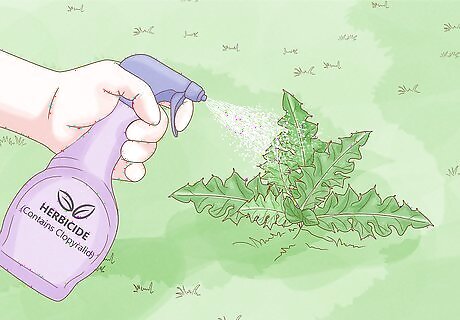
The best time to kill thistles is while they’re young. Try to catch them when they’re still in their rosette stage and haven’t had a chance to flower or produce seeds. Choose an herbicide that contains either clopyralid, aminopyralid, or glyphosate and apply it directly to the thistles to stop them dead in their tracks before they get a chance to spread. Please note: The WHO considers glyphosate to be a probable human carcinogen. Its use is prohibited in some states and countries. Please check with your local laws and use caution if handling this chemical. You can find these herbicides at your local garden or factory supply store. You can also order them online. Mix the herbicide according to the directions on the packaging and use a hand or pump sprayer to apply it directly to the thistles.
Treat your entire pasture if you have adult thistles.
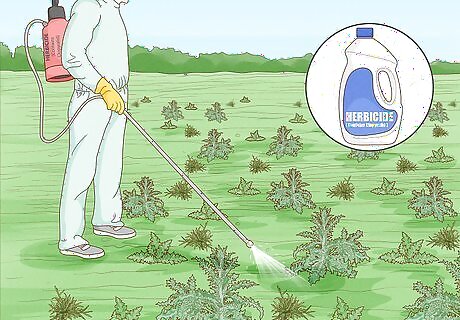
If you have thistles, you likely have other weeds, too. If the thistles have started developing green stems, spot treating won’t be enough to fully eradicate them from your pasture. Additionally, you probably have other weeds throughout your pasture. Your best bet is to use a strong herbicide, such as the kind that contains clopyralid, aminopyralid, or glyphosate to your entire field, which will knock out almost all of your weeds, including thistles. Catching the thistles before they have a chance to flower will help keep them from spreading any further.
Mow the pasture for temporary control.
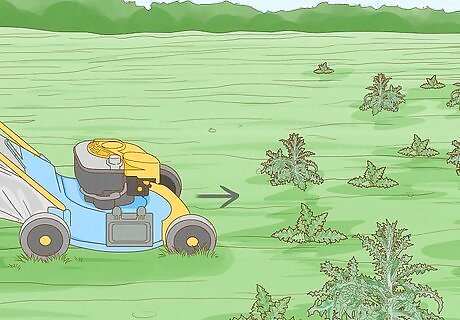
Try to mow before the flower buds begin to emerge. Mowing won’t destroy the roots of the thistles, so the weeds will likely eventually grow back. But it’s a quick and easy way to get rid of the plants growing in your pasture. If you can mow before the thistles are able to flower and spread their seeds, you can help limit their spread as well. You can also mow a pasture that’s been overrun with thistles and then apply an herbicide to help fully eradicate them.
Dig out small patches of thistles if they haven’t flowered yet.

Use a shovel to cut the plant and then pull it out. If you only have small patches of individual thistle plants that are still in their growing or “bolting” phase, take a shovel and cut the plant about 3–4 inches (7.6–10.2 cm) below the surface of the soil to separate it from its roots. Then, grasp the base of the plant, pull it out of the ground, and dispose of it. If you have Canada thistle, which you can identify by its tall stem, barbed leaves, and small, purple flower heads, digging it out with a shovel may not be enough to eradicate it. The small bits of roots may regenerate and grow into new plants. You’ll need to apply an herbicide as well.
Try rotational grazing.
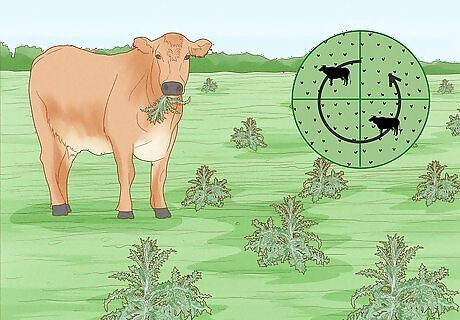
It may be enough to control your thistle problem. If you raise cattle in your pastures, one simple solution that may work is to transfer them into a pasture that has thistles in it. Your cattle may eat all of the weeds and help prevent their spread. As the thistle grows back, your cattle will eat the new growths, and eventually, the roots may starve and the weeds will die. However, cattle can sometimes be picky eaters, and they may not eat the thistles. Sometimes, cattle can eat the tasty grass around weeds, which can allow the weeds to get more sunlight and nutrients and actually make your problem worse. Goats can also graze on weeds.
Avoid overgrazing to help prevent thistles.
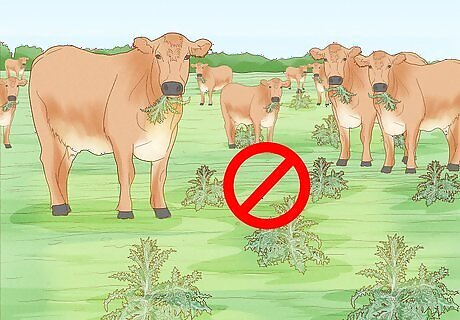
Allow your grass to choke out new weed growth. If you have a particularly bad year with thistles in 1 of your pastures, after you treat the pasture with herbicides to get rid of the thistles, allow the grass to grow tall the following year. Keep your cattle from grazing on the grass to encourage root growth that can compete with weeds and help prevent or reduce their growth.
Check your pastures weekly for thistles.

A few plants can quickly turn into an infestation in your pasture. If you notice a few thistle plants out in your pasture, take action to get rid of them as soon as you can. A single thistle plant can easily produce more than 4,000 seeds. That handful of thistle plants that you see now can quickly turn into hundreds and thousands in a year or 2.

















Comments
0 comment